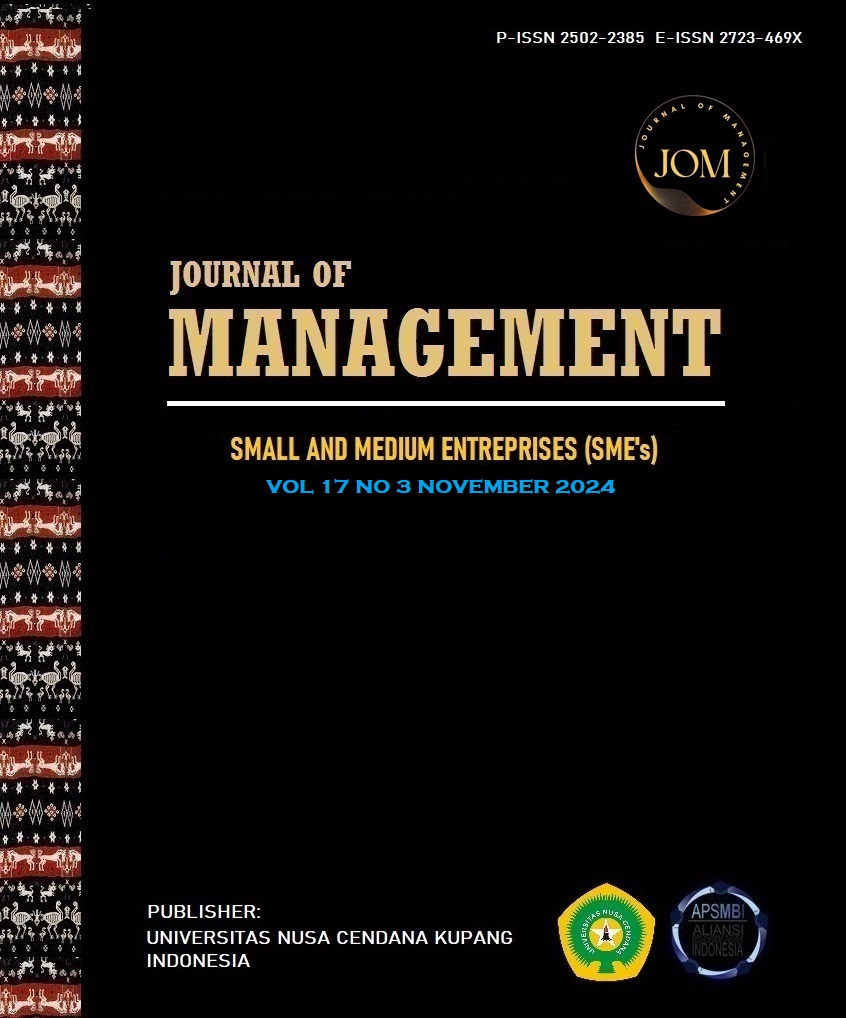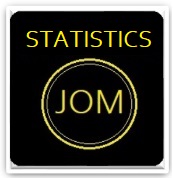PENGARUH WORK-LIFE BALANCE TERHADAP EMPLOYEE ENGAGEMENT PADA PEGAWAI BIRO SUMBER DAYA MANUSIA KEMENTERIAN KEUANGAN RI
Abstract
The level of competitiveness of Indonesian human resources (HR) in the world is recorded to have risen four ranks to position 47 based on the results of the Institute for Management Development World Talent Ranking (IMD WTR) 2023 research. The Indonesian Ministry of Finance realizes that one of the greatest strengths in an organization to achieve this lies in its human resources (HR). This study aims to identify the perceptions of employees of the Ministry of Finance's HR Bureau regarding work-life balance and employee engagement and to analyze the influence of work-life balance dimensions on employee engagement. The methods used are descriptive analysis and multiple linear regression analysis with SPSS 26. The results of the study show that employee perceptions of work-life balance and employee engagement are classified as good criteria, then the work-life balance has an effect on employee engagement, then there are two variables, namely Work Interference Personal Life and Personal Life Interference Work have an effect on employee engagement. The variables Work Enhancement of Personal Life and Personal Life Enhancement of Work have no effect on employee engagement. It can be concluded that employees can distinguish and understand their roles and responsibilities both in work and in their personal lives when working.
Keywords: Employee engagement; Ministry of Finance; Work-life balance
Downloads
References
Bakker AB, Leiter MP. (2010). Work Engagement: A Handbook of Essential Theory and Research. In Psychology Press (Vol. 3). Psychology Press.
Cahill, S.E, Sandstrom, K, Froyum C. (2015). Inside Social Life: Readings in Sociological Psychology and Microsociology. Oxford University Press.
Cooper DR, Schindler PS. (2014). Business Research Methods. Twelfth Ed. United States: McGraw Hill.
Creswell JW. 2014. Research Design: Qualitative, Quantitative, and Mixed Methods Approaches. In SAGE (4th Edition). SAGE .
Dantes N. (2023). Desain Eksperimen dan Analisis Data. PT RajaGrafindo Persada- Rajawali., siap terbit. https://books.google.co.id/books?id=m2zdEAAAQBAJ&pg=PA93&source=gbs_selected_pages&cad=1#v=onepage&q&f=false.
Fisher GG, Bulger CA, Smith CS. (2009). Beyond Work and Family: A Measure of Work/Nonwork Interference and Enhancement. J Occup Health Psychol. 14(4):441–456. doi:10.1037/a0016737.
Friedman SD. (2014). Leading the Life You Want: Skills for Integrating Work and Life. Boston: Harvard Business School.
Ghozali I. (2018). Aplikasi Analisis Multivariate Dengan Program IBM SPSS 25, Edisi Kesembilan. In Universitas Diponegoro (9th Editio, Issue September). Universitas Diponegoro, Semarang.
Hewitt A. (2015). Model of Employee engagement. January.
IMD International Institute for Management Development. (2023). https://www.imd.org/country-profile/talent-indonesia-2023/.
Imperatori B. (2017). Engagement and Disengagement at Work. In SpringersBriefs in Business (Vol. 29, Issue 4). Springer. https://doi.org/10.1007/978-3-319-51886-2 ISSN
Jogiyanto. (2008). Metodologi Penelitian Sistem Informasi. Goodreads., siap terbit. https://www.goodreads.com/book/show/6250531-metodologi-penelitian- sistem-informasi.
Kemenkeu. (2023). Laporan Kinerja Kementerian Keuangan 2023. Indonesia. https://www.kemenkeu.go.id/media/18240/laporan-kinerja-kementerian- keuangan-2020.pdf.
Kramar R, Bartram T, Cieri H De, Noe RA, Hollenbeck JR, Gerhart B, Wright PM. (2017). Human resource management: strategy, people, performance. Ed ke- 5th. Australia: McGraw Hill.
Macey WH, Schneider B, Barbera KM, Young S a. (2009). Employee Engangement: Tools for Analysis, Pracice, and Competitive Advantage (S. Rogelberg (ed.); First). Wiley-Blackwell
Machado C. (2018). Organizational Behaviour and Human Resource Management. In J. P. Davim & C. Machado (Eds.), Springe International Publishing (Vol. 33, Issue 2). Springer. https://doi.org/10.1007/978-3-319-66864-2.
PANRB K. (2022). Catatan Tengah Tahun Reformasi Birokrasi 2022 Pendayagunaan Aparatur Negara dan Reformasi. https://www.menpan.go.id/site/berita- terkini/catatan-tengah-tahun-reformasi-birokrasi-2021.
Priyono. (2008). Metode Penelitian Kuantitatif (T. Chandra (ed.); 2008th ed., Vol. 21, Issue 1). Zifatama.
http://journal.um-surabaya.ac.id/index.php/JKM/article/view/2203 .
Schaufeli WB, Bakker AB. (2004). Utrecht work engagement scale. Occup Heal Psychol Unit Utr Univ. 1 December:1–60. doi:10.1037/t01350-000.
Schroeder S, Modaff DP. (2018). Exploring employee engagement through communication. Qual Res Reports Commun. 19(1):35–43. doi:10.1080/17459435.2018.1468807.
Septiani AE, Frianto A. (2023). Pengaruh Work Life Balance dan Perceived Organizational Support terhadap Employee engagement pada BPJS Ketenagakerjaan. J Ilmu Manaj. 11(2):266–277.
Shah, S. S. (2014). The Role of Work-Family Enrichment in Work-Life Balance & Career Success: a comparison of German & Indian managers. [Ludwig Maximilians University]. http://edoc.ub.uni-muenchen.de/16634/
Sugiyono. (2015a). Metode Penelitian Kuantitatif, Kualitatif dan R&D. Alfabeta.
Sugiyono. (2015b). Metode Penelitian Pendidikan (Pendekatan Kuantitatif, Kualitatif, dan R&D). Alfabeta.
Sui Pheng, L., & Chua, B. K. Q. (2019). Work-Life Balance in Construction. In L. S. Pheng (Ed.), Springer Nature Singapore. Springer Singapore.
https://doi.org/10.1007/978-981-13-1918-1
Uma, S., & Bougie, R. (2016). Research Methods for Business: A Skill-Building Approach. In Wiley (7th editio). Wiley.
Weinstein, S. M. (2015). B is for Balance : 12 Steps Toward a More Balanced Life at Home and at Work (Second). Sigma Theta Tau International.
EEshhttp://encore.unisa.ac.za/iii/encore/record/C__Rb2603693__S%22work life balance%22__P1__Orightresult__U__X3__T?lang=eng&suite=cobalt

 Putri Auriel Chaniago(1*)
Putri Auriel Chaniago(1*)



